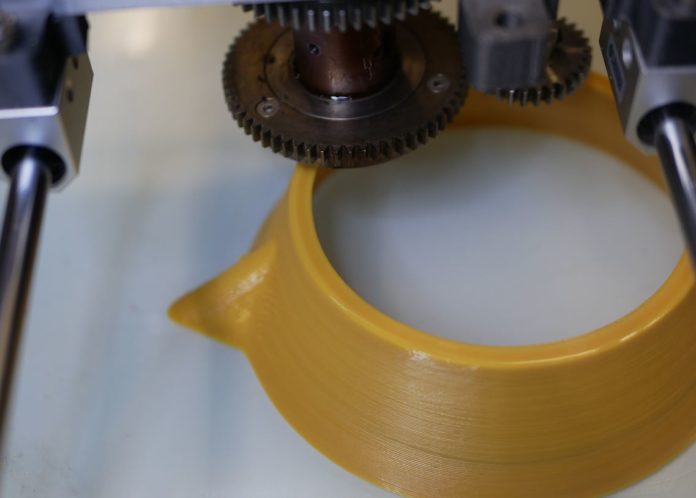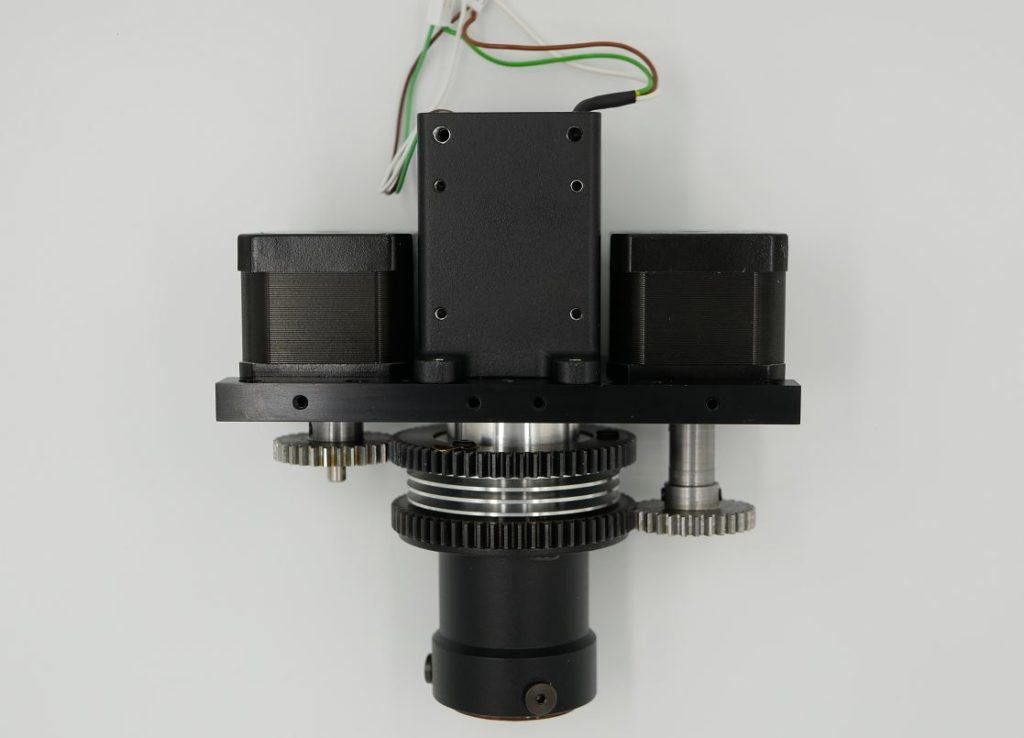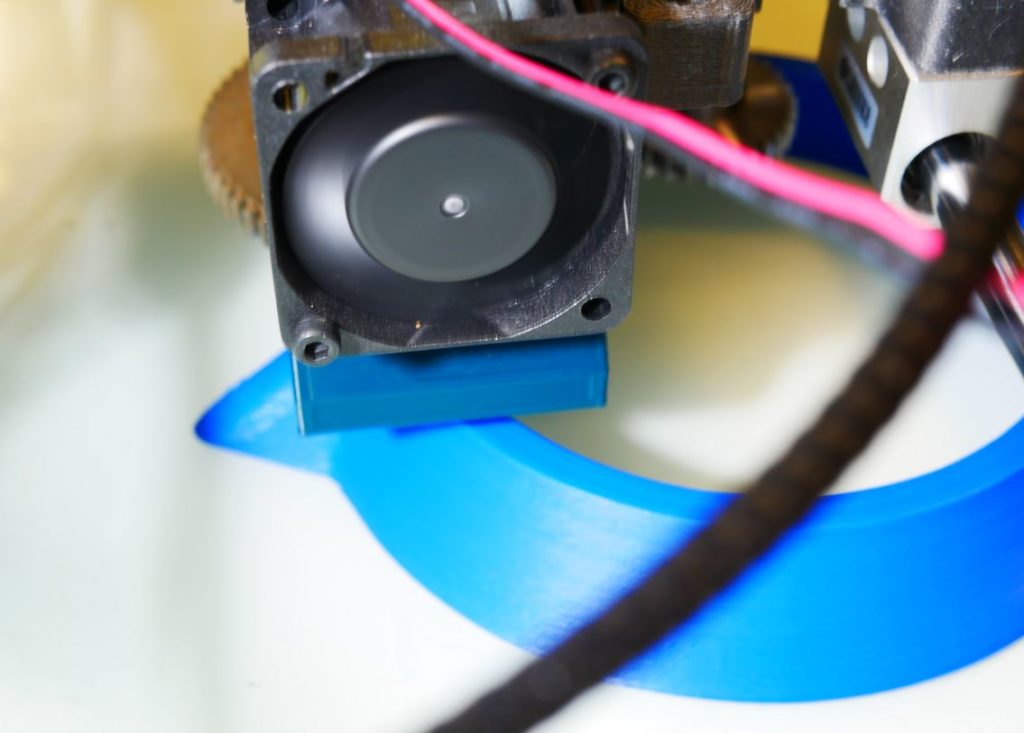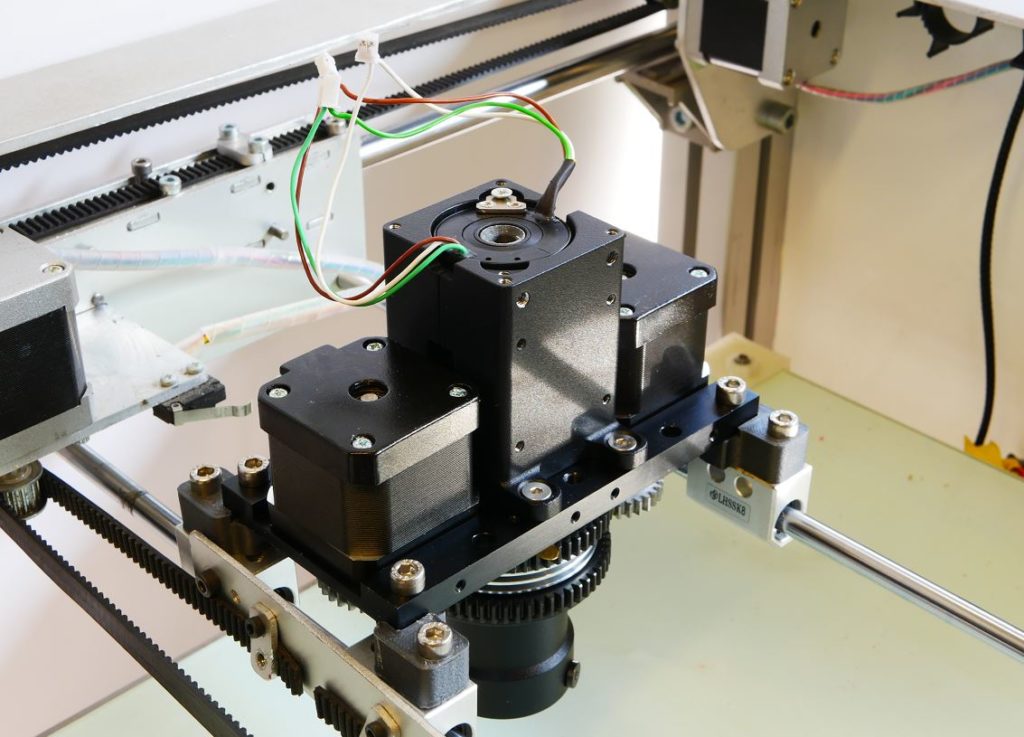Founded in 2018, engineering company Sculpman is officially debuting in the AM industry with the launch of a patented “Variable Nozzle Technology”.
The Belgian start-up ambitions through this solution to enhance polymer extrusion 3D printing such as FFF, without jeopardizing feature detail or visual quality. To do so, they explain how they had to to break away from circular nozzle shape which has been the de-facto standard in FFF printing for decades: the circular output shape producing cylindrical ‘spaghetti’ tracks is not really an optimal configuration for efficiently printing clean layers.
The Sculpman team has therefore investigated the inherent issues related to FFF’s layer adhesion in functional and visual applications.
“Cylindrical tracks that are placed horizontally next to each other produce a wave pattern. Even if they are squished slightly flat by the nozzle, the area where both tracks touch is still small, as each track’s cross-section is elliptic and only the mid-section of the sides touch,” Gerolf Vanacker, co-founder of Sculpman, discloses. By contrast, the Sculpman nozzles deposits ribbons of varying width that can draw a coherent, flat track that is multiple millimeters wide in a single stroke. Not only does it improve layer homogeneity and part quality, but it speeds up the printing process as well, another long-standing hurdle holding back the adoption of 3D printing.
Continuously variable nozzle opening
Sculpman’s proposed solution is based on regulating a continuously variable width-of-stroke during extrusion. “If you come to think of it, it’s very similar to painting a picture,” Vanacker explains. “If you need high detail, a small pencil is the better choice. However, if larger areas need to be filled in, you’d be better of using a broad brush.”
The Sculpman nozzle can transform continuously between that small pencil size and the large brush. Moreover, the nozzle can completely close as well to cut off the material flow. “We currently offer this system in a 0 to 10 mm opening configuration with a cross-section of 0.5mm featuring a build rate of 500 cm3 per hour. The cross-section is what limits the possible layer heights you can use. Typically, one can go as low as 1/5th of the cross-section and up to close to 100% of it,” Vanacker explains. Larger cross-sections for thicker layers and higher build rates in large-scale applications are currently being worked on.
An important part in the development of the Sculpman system is the slicing and planning software. A continuously varying width of stroke creates many possibilities for filling in a layer. How do you choose the optimal extrusion paths? “That has been a proper challenge,” says Matthias Mertens, the lead software developer at Sculpman, “But through countless hours of research, strategy building and careful optimization we’ve managed to solve that problem really well”.
The current nozzle is to be used with a filament-based feeding system using standard 2.85mm filament and can be ordered with or without extrusion drive subassembly, as well as in a Bowden configuration. An alternative system for FGF (Fused Granulate Fabrication) printers using pellets is being actively developed as well.
The company’s aim is to specifically act as a supplier to the Additive Manufacturing industry and to not engage directly towards the end-user market. “Basically, we’re open to companies that want to try out our technology and integrate it within their systems,” concludes Vanacker.
Remember, you can post job opportunities in the AM Industry on 3D ADEPT Media free of charge or look for a job via our job board. Make sure to follow us on our social networks and subscribe to our weekly newsletter : Facebook, Twitter, LinkedIn & Instagram ! If you want to be featured in the next issue of our digital magazine or if you hear a story that needs to be heard, make sure you send it to contact@3dadept.com









